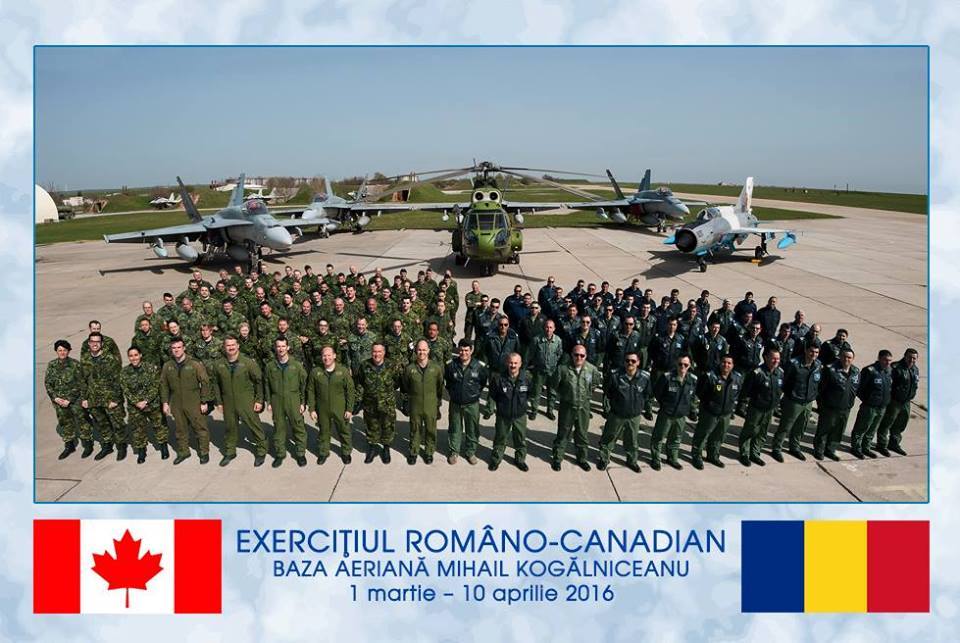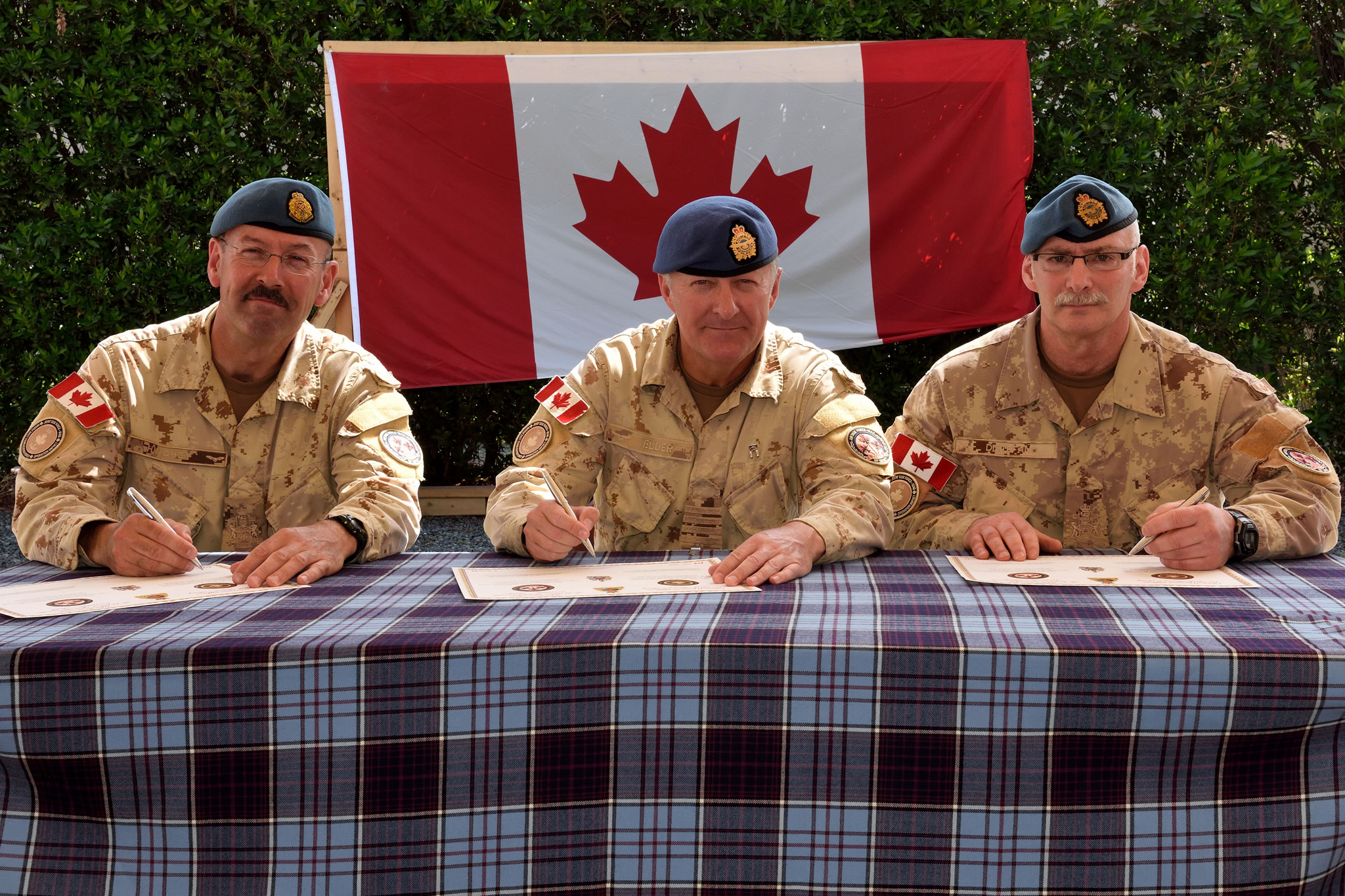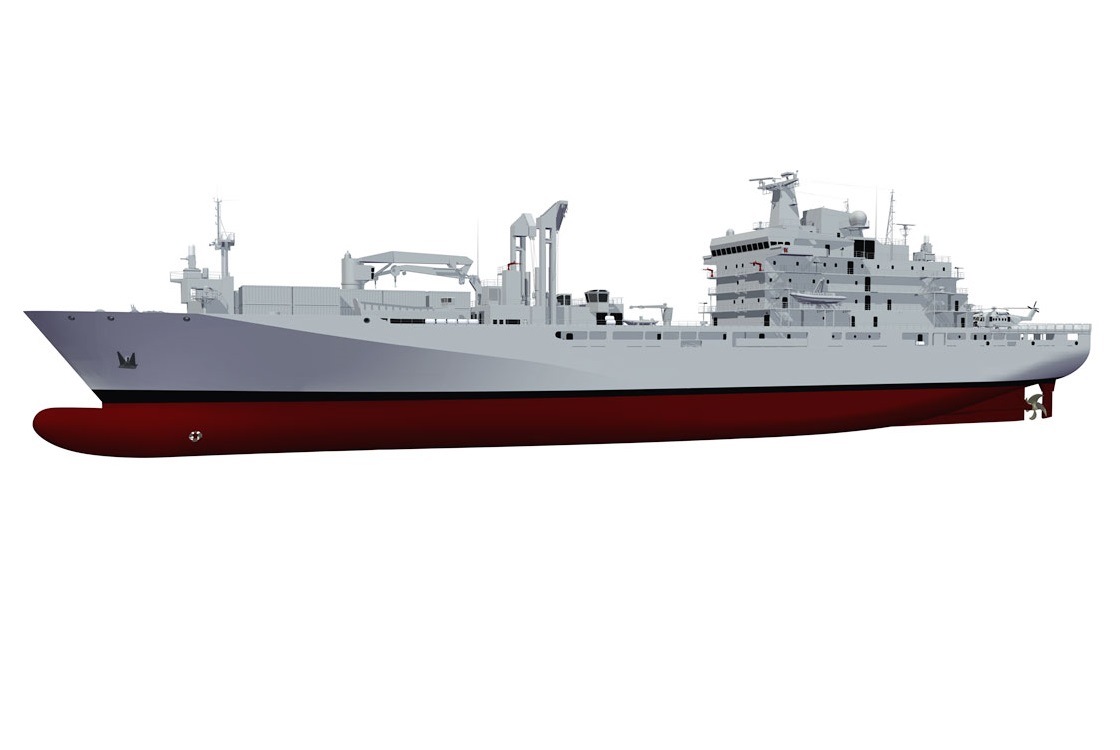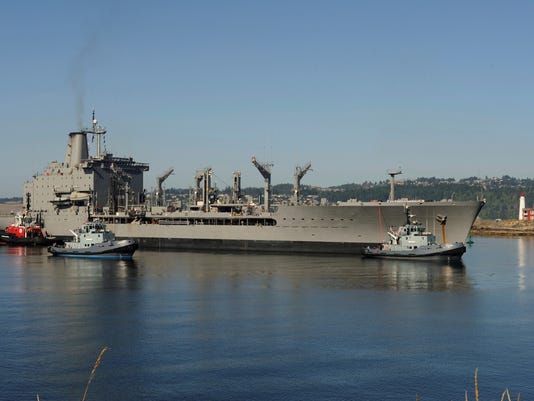Royal Canadian Air Force
 |
| About 100 Royal Canadian Air Force personnel, mainly from 3 Wing Bagotville, Quebec, with four CF-188 Hornet fighter aircraft conducted bilateral training with the Romanian Air Force in Constanta, Romania, from March to April 2016. PHOTO: CER SENIN- Revista Forţelor Aeriene (Romanian Air Force magazine) Facebook page |
Exercise Resilient Resolve built on Canada’s positive relationship with Romania, an important NATO Ally, strengthening mutual confidence in using common NATO procedures.
“The members of Air Task Force-Romania demonstrated the dedication and professionalism that makes the Royal Canadian Air Force an exemplary partner to our allies,” said Brigadier-General Blaise Frawley, acting commander of 1 Canadian Air Division. “I’m proud of their contribution to furthering the relationships between Canada and Romania. These airmen and airwomen have represented the Canadian Armed Forces and Canada with honour.”
Approximately 100 Royal Canadian Air Force personnel, mainly from 3 Wing Bagotville, Quebec, and four CF-188 Hornet fighter aircraft that had previously been deployed on Operation Impact, were deployed to Constanta, Romania, to conduct a month-long bilateral training exercise with the Romanian Air Force known as Exercise Resilient Resolve.
During the exercise, Air Task Force-Romania flew 86 missions for a total of more than 104 flying hours, including 18 sorties directly involving Canadian CF-188 Hornets and Romanian Air Force 861st Fighter Squadron MiG-21 Lancers, allowing for valuable air-to-air combat training missions.
“Exercise Resilient Resolve provided the opportunity to share our expertise and deepen the relationship with the Romanian Air Force while simultaneously providing excellent learning opportunities for our RCAF personnel and teams,” said Lieutenant-Colonel David Turenne, the commander of Air Task Force-Romania. “Overall, it was a resounding success and a great experience for everyone who participated.”
ATF-Romania ground and support personnel conducted bilateral training with Romanian Air Force firefighters, air weapons controllers and network operators. Such training increased Canadian personnel’s understanding of our allies’ procedures and equipment, increasing our interoperability for possible future multinational operations.
The Air Task Force also conducted close air support training with the United States Marine Corps Joint Tactical Air Controllers stationed at Mihail Kogalniceanu Air Base, enhancing our relationship with one of our closest military ally.
During the exercise, the Chief of the Romanian Air Force Staff, Major-General Laurian Anastasof, presented three members of Air Task Force-Romania and the commander of 3 Wing with the Romanian Air Force Emblem of Honour.
Canadians presented with Romanian Air Force Emblem of Honour
By Captain Marie-France Poulin
On March 22, 2016, Major-General Laurian Anastasoff, Air Chief of Romania, and Ms Joanne Lemay, the Canadian ambassador to Romania, welcomed at Major-General David Wheeler, commander of 1 Canadian Air Division, the 1 Canadian Air Division chief warrant officer as well as commanders and chief warrant officers from 3 Wing Bagotville, Quebec; 4 Wing Cold Lake, Alberta; and 14 Wing Greenwood, Nova Scotia, to Mihail Koganiceanu Air Base.
The delegation was returning from Kuwait when it stopped over in Constanta to meet the members of Air Task Force -Romania who are currently deployed for Exercise Resilient Resolve.
During the ceremony, three members of the Task Force and the commander of 3 Wing received commendations from the Air Chief of Romania for the exceptional work they have accomplished to this point: Colonel Darcy Molstad, commander of 3 Wing; Lieutenant-Colonel David Turenne, Task Force commander, Leading Seaman Johanna Wojewoda, from 425 Tactical Fighter Squadron, and Warrant Officer André Vachon, also from 425 Squadron.
Major-General Wheeler sincerely thanked Major-General Anastasof for his recognition and for all the support that Romanian Air Force personnel had given the Task Force since its arrival.
”On short notice, the members of ATF-Romania deployed here, in Romania, for the second time since 2014. This would not have been possible without the support that you have given us,” said Major-General Wheeler. “We have developed a relationship of cooperation and of friendship. I thank you sincerely for all the support that your country and your personnel have offered ATF-Romania since their arrival.”
“I am proud to see the Canadian flag here,” said Major-General Anastasof. “Our two countries share the same values of professionalism, commitment and integrity.”
During the visit, the commanders and chief warrant officers had the opportunity to meet their personnel and see ATF-Romania work environment.










